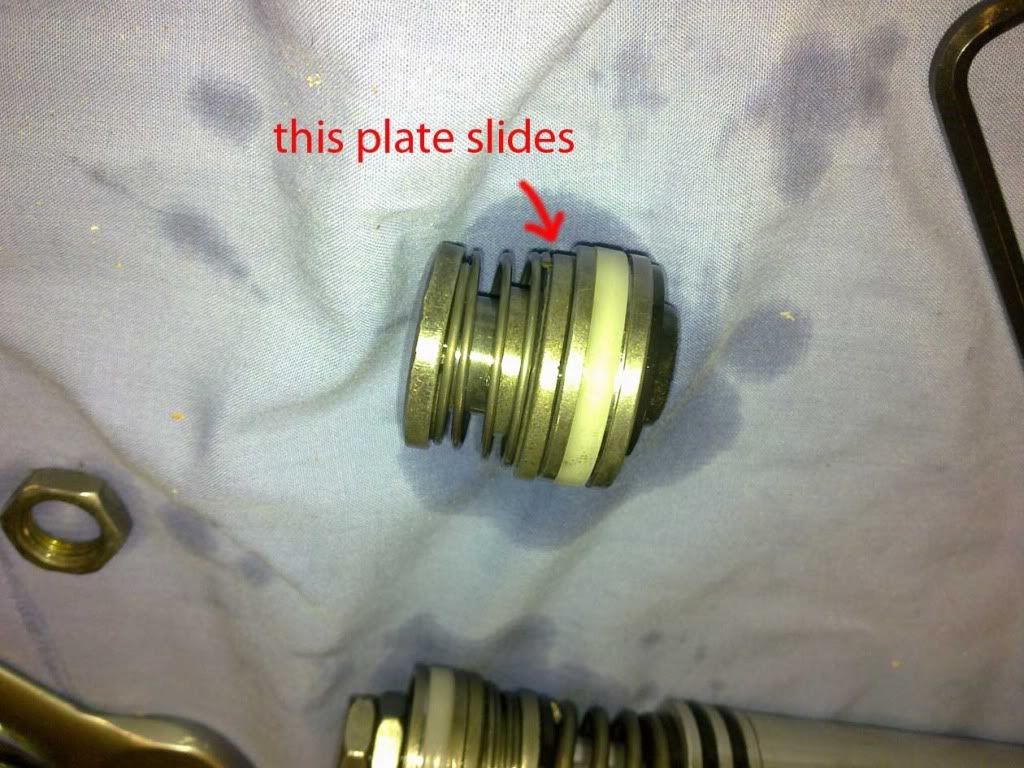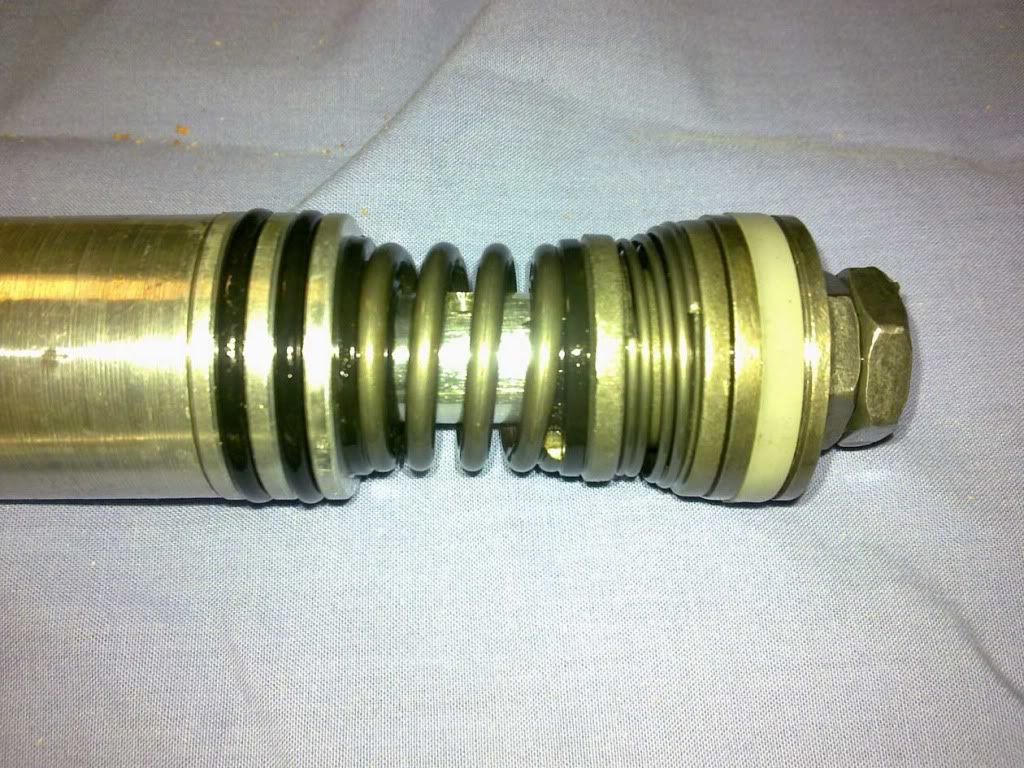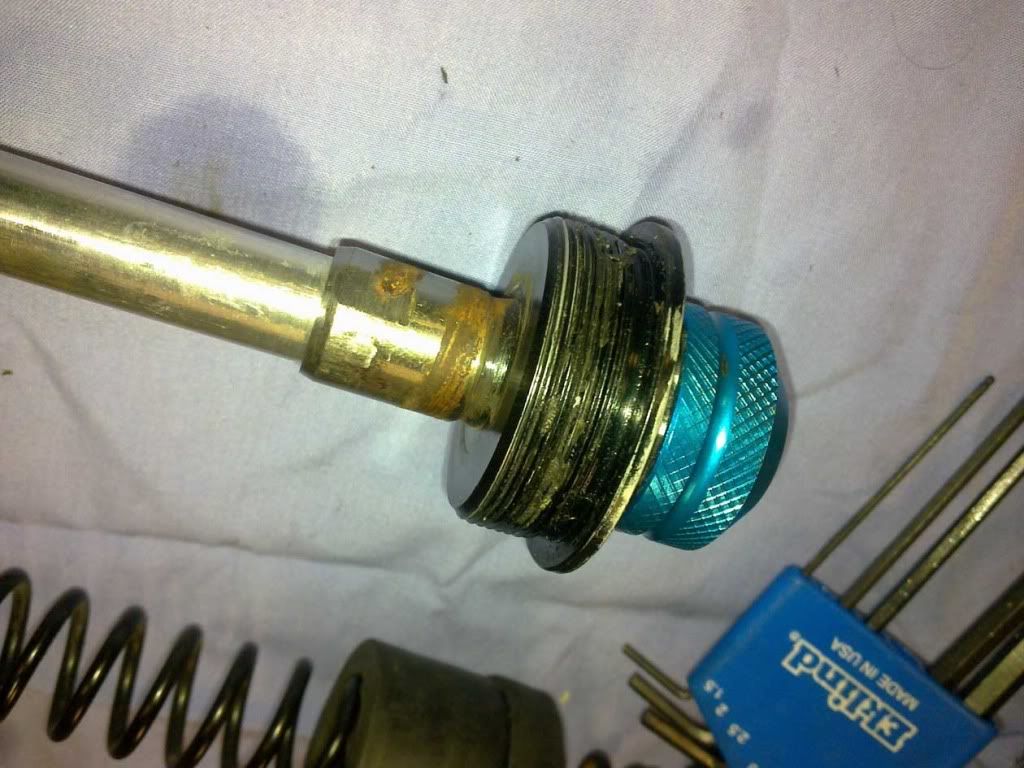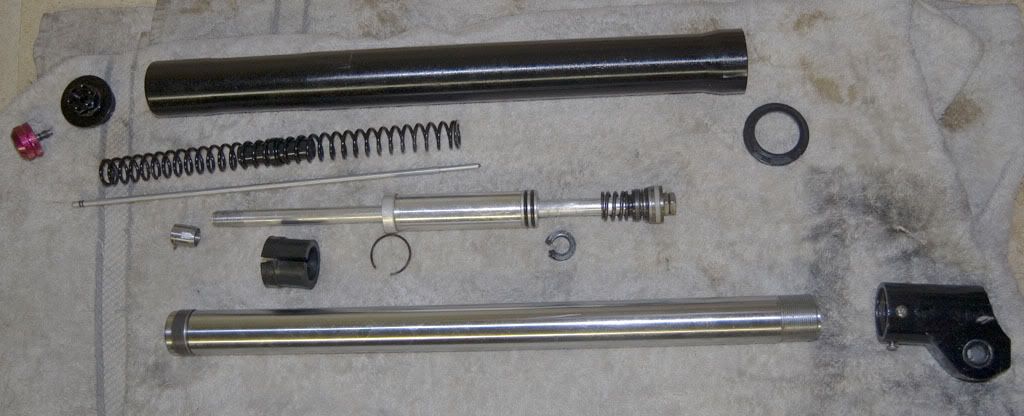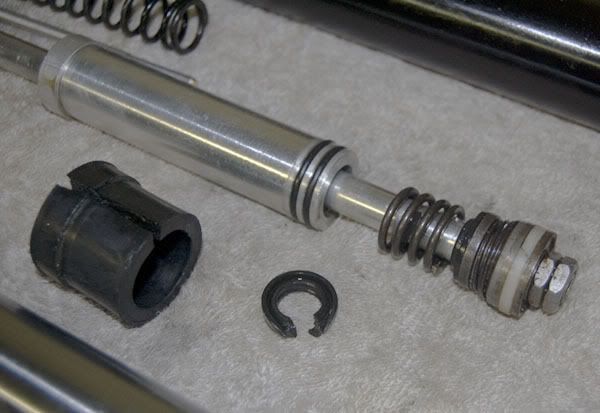BananaMan
Well-Known Member
USD Fork pulldown, diagnostics, rebuild and questions
ok this is my first and its as much a 'help me out' as it is a tut, but here goes.
well a while back the forks on my atomik pro-x 140 failed so i bought a new set off a guy on here that had clicker adjusters, everything else was the same, bolted them up and thought everything was hunky dorey.
soon realised that they were not performing properly, they were bottoming out and sluggish.
so naturally i changed the oil to a thicker grade, 15wt, after getting the right ammount this time i went for a ride, waaaayyy to stiff, and still very sluggish, could now notice that the clickers seemed to do bugger all.
so i cracked the shats, pulled em off and started taking pics.
first off remove the wheel nut and axle and take the front wheel out, undo the brake caliper and fork guards, pretty simple so i dont have a photo of that.
undo the bolts holding the fork legs into the triples and slide the legs out.
now for the interesting stuff, start by clamping the lower leg in a vice using a set of soft jaws, stick a big screwdriver or bar through the axle hole and undo the foot from the leg.
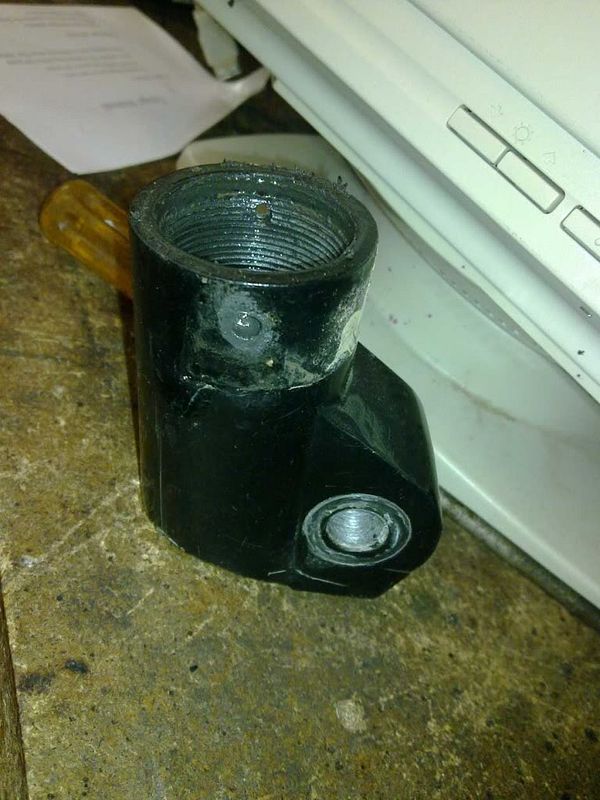
you will see a little black seal in the bottom of the leg once the foot is off, undo the bolt in the middle of this, screw in a longer bolt so you can hold onto it and wriggle out the oil seal.
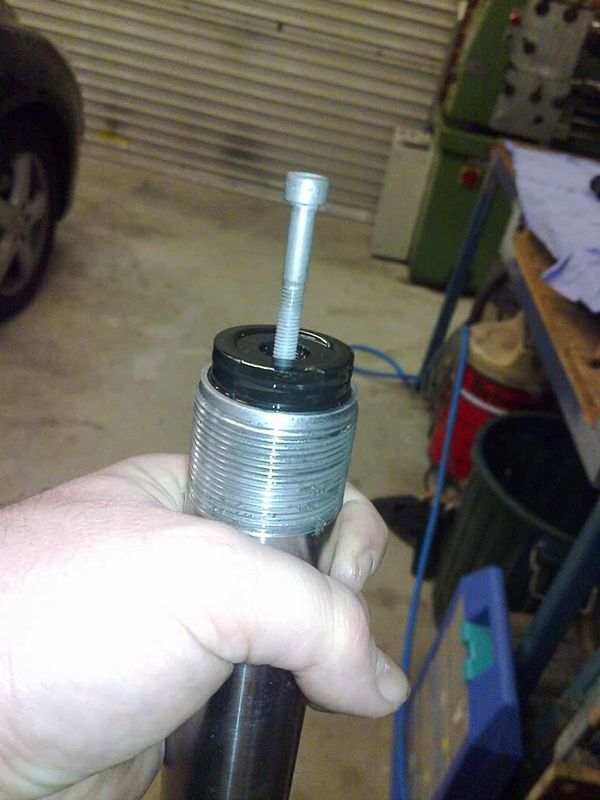
be carefull as the oil is under this and you dont want it going everywhere, carefully drain it into a marked container so you can measure the ammount that comes out, also you may need to pump the leg a little to get all the oil out.
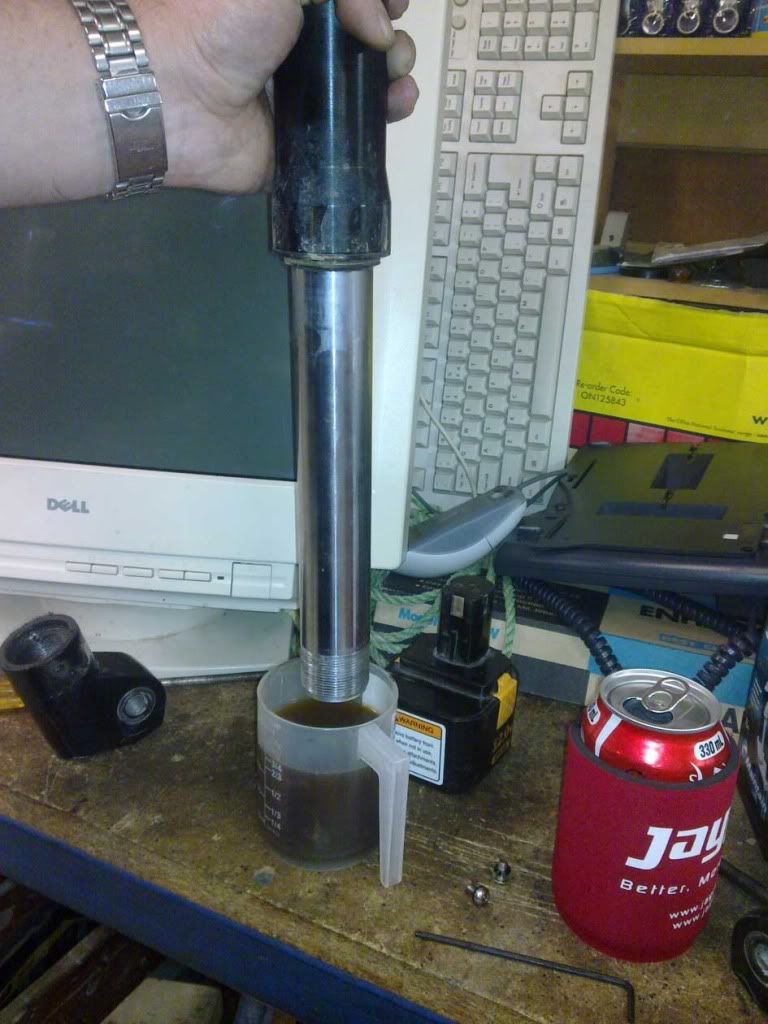
next clamp the upper section of the leg in the soft jaws again, remove the clicker by taking out the small screw in the centre, and undo the top cap with a large spanner or socket, MAKE SURE YOU USE THE CORRECT SIZE, mine are already chewed by the previous owner cos they do damage easily. AND FOR GODS SAKE DONT USE MULTI GRIPS!!!!!
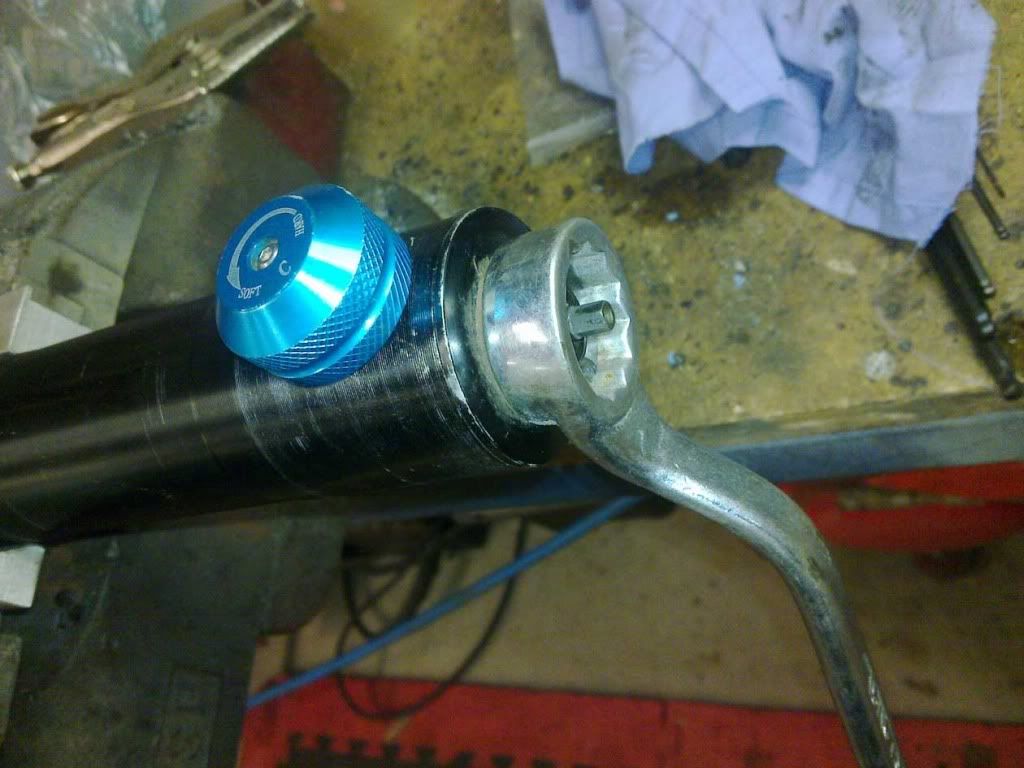
you can now slide the inner section free of the upper fork leg, the rubber bump stop is tight in the tube and may need some persuasion to get it out, sliding the lower leg up and down can usually get it free, you should have this.
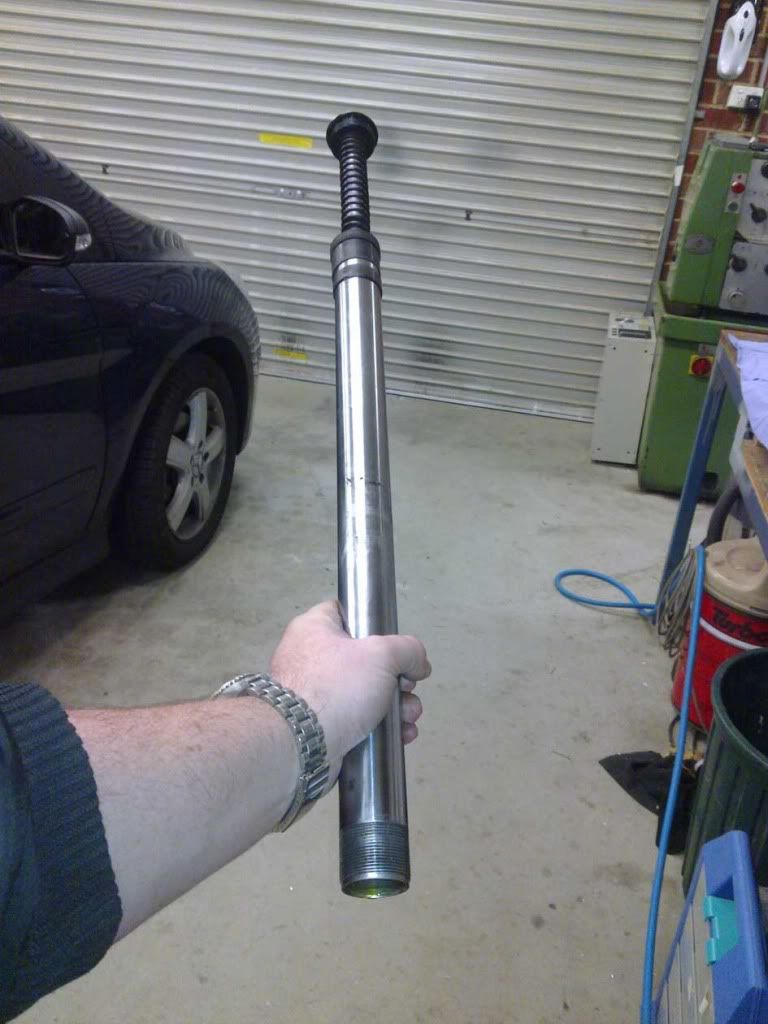
now the next bit is tricky, using small flat blade screw drivers you need to flick out the retaining circlip in the top of the lower leg as it does not have holes for circlip pliers, unfortunatly i didnt get a photo of me doing this, after trying to do this for 20 minutes, throw some tools, have a drink, maybe a smoke, and keep trying, once you get the first one the second will be easy.
once you get those clips out you can slide the inner working free of the tube. You should now have this assembly.
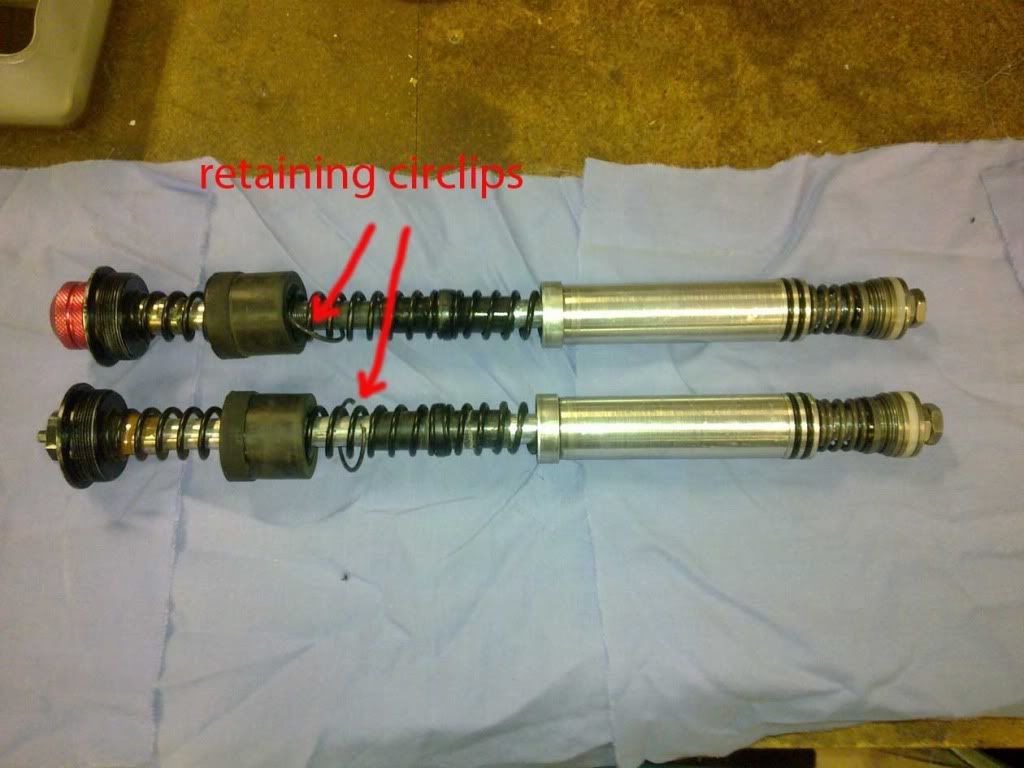
This is where i found my main problem, each fork leg has a check valve (one way valve)at the bottom that regulates the oil flow in one direction using the clickers, so in the rebound adjustment leg for example, the oil can flow fast up the leg when the valve opens during compression, but when the leg stretches out again the valve closes and forces the oil through the clicker adjustment (which is a needle and seat arrangement) which regulates the flowrate and therefore speed of return.
what i found was that both legs had the valves working in the same direction (rebound adjustment), so undid the 2 nuts at the bottom and removed the assembly.
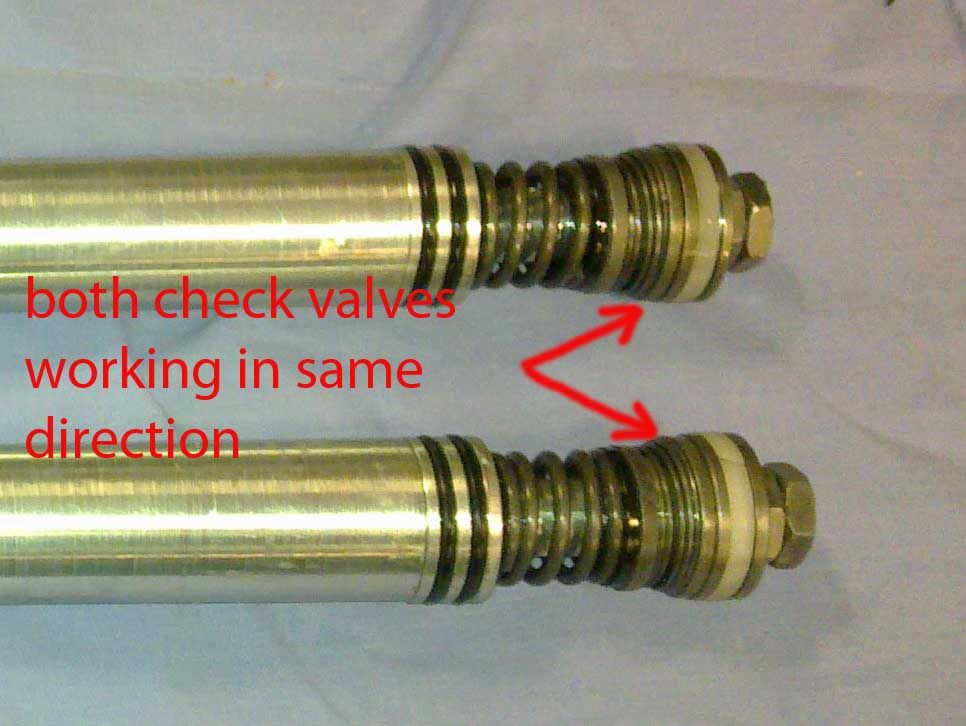
ok this is my first and its as much a 'help me out' as it is a tut, but here goes.
well a while back the forks on my atomik pro-x 140 failed so i bought a new set off a guy on here that had clicker adjusters, everything else was the same, bolted them up and thought everything was hunky dorey.
soon realised that they were not performing properly, they were bottoming out and sluggish.
so naturally i changed the oil to a thicker grade, 15wt, after getting the right ammount this time i went for a ride, waaaayyy to stiff, and still very sluggish, could now notice that the clickers seemed to do bugger all.
so i cracked the shats, pulled em off and started taking pics.
first off remove the wheel nut and axle and take the front wheel out, undo the brake caliper and fork guards, pretty simple so i dont have a photo of that.
undo the bolts holding the fork legs into the triples and slide the legs out.
now for the interesting stuff, start by clamping the lower leg in a vice using a set of soft jaws, stick a big screwdriver or bar through the axle hole and undo the foot from the leg.

you will see a little black seal in the bottom of the leg once the foot is off, undo the bolt in the middle of this, screw in a longer bolt so you can hold onto it and wriggle out the oil seal.

be carefull as the oil is under this and you dont want it going everywhere, carefully drain it into a marked container so you can measure the ammount that comes out, also you may need to pump the leg a little to get all the oil out.

next clamp the upper section of the leg in the soft jaws again, remove the clicker by taking out the small screw in the centre, and undo the top cap with a large spanner or socket, MAKE SURE YOU USE THE CORRECT SIZE, mine are already chewed by the previous owner cos they do damage easily. AND FOR GODS SAKE DONT USE MULTI GRIPS!!!!!

you can now slide the inner section free of the upper fork leg, the rubber bump stop is tight in the tube and may need some persuasion to get it out, sliding the lower leg up and down can usually get it free, you should have this.

now the next bit is tricky, using small flat blade screw drivers you need to flick out the retaining circlip in the top of the lower leg as it does not have holes for circlip pliers, unfortunatly i didnt get a photo of me doing this, after trying to do this for 20 minutes, throw some tools, have a drink, maybe a smoke, and keep trying, once you get the first one the second will be easy.
once you get those clips out you can slide the inner working free of the tube. You should now have this assembly.

This is where i found my main problem, each fork leg has a check valve (one way valve)at the bottom that regulates the oil flow in one direction using the clickers, so in the rebound adjustment leg for example, the oil can flow fast up the leg when the valve opens during compression, but when the leg stretches out again the valve closes and forces the oil through the clicker adjustment (which is a needle and seat arrangement) which regulates the flowrate and therefore speed of return.
what i found was that both legs had the valves working in the same direction (rebound adjustment), so undid the 2 nuts at the bottom and removed the assembly.

Last edited:




